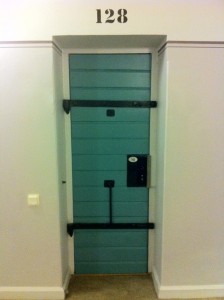Suppose you have a problem, what’s the best way to solve it? How about inviting a selected number of experts on the topic from all over the world, pay for their travel, lock them up in a former prison on an island, seduce them to present their views, facilitate that by excellent food, cleverly moderate the discussion, confront the solutions with the problems, integrate and merge different views, and you’ll end up with a deliverable in the form of a manual to solve your problem. Good for you and inspiring for all participants.
 This is precisely what the Swedish Association of Local Authorities and Regions (SALAR) did when they discovered that eParticipation at the local and regional level in Sweden needed a boost. Of course there are lots of pilots and experiments, but they felt that a consistent view on possibilities and challenges posed by new media was lacking. So they convened a 48 hour #eSummit about this topic on the island of Långholmen in Stockholm.
This is precisely what the Swedish Association of Local Authorities and Regions (SALAR) did when they discovered that eParticipation at the local and regional level in Sweden needed a boost. Of course there are lots of pilots and experiments, but they felt that a consistent view on possibilities and challenges posed by new media was lacking. So they convened a 48 hour #eSummit about this topic on the island of Långholmen in Stockholm.
The eSummit started with 12 minutes statements by the experts about their core view. These covered Big data society, Co creation, Open government, Crowd sourcing, Participatory budgetting, Collaborative spatial planning, Empowerment by e-charters, Anti corruption & social accountability mechanisms, Business process redesign, and so on. Subsequently the experts worked in twos and fours to integrate their views. These were confronted with the expectations of the hosts as expressed by a “ginger group”.
After this the question arose whether or not Sweden actually does have a problem. Being one of the richest countries in the world, with an egalitarian society and high trust in government, one would hardly believe so. However, after some deliberations it was concluded that an ageing population, increasing expenditure and diminishing tax returns does require new approaches to reform the welfare state and its public sector.
eParticipation, meaning that government is willing to let civil society participate in its processes, can help. Even better is eCollaboration, which assumes a more equal relationship in interaction between government and society, when the latter takes the initiatieve. Like in many other countries, Swedish public administrations experiment with eParticipation, Social media and collaborative tools, but these remain fragmented. So the challenge is to put these together in a consistent framework and embed them in daily work.
Thus the experts started drafting an “eCollaboration Manifesto” consisting of a balanced set of ambitions, expectations, approaches and instruments for state-of-the-art citizen engagement. The first version contains integrated and consolidated suggestions for participative policymaking and public service delivery, to be further elaborated by experts and users. Next generation participation projects should combine public agenda setting, open data and collaborative decision making. This eCollaboration approach can be of help not only in the case of public sector reform, but also in other circumstances, like supporting austerity measures or fighting corruption.
The Swedish firm IKEA reinvented home furniture by going back to its core function and restyling it with utmost simplicity. The eCollaboration Manifesto is an IDEA like IKEA, and will provide a construction manual with eGovernance utensils Swedish Design.